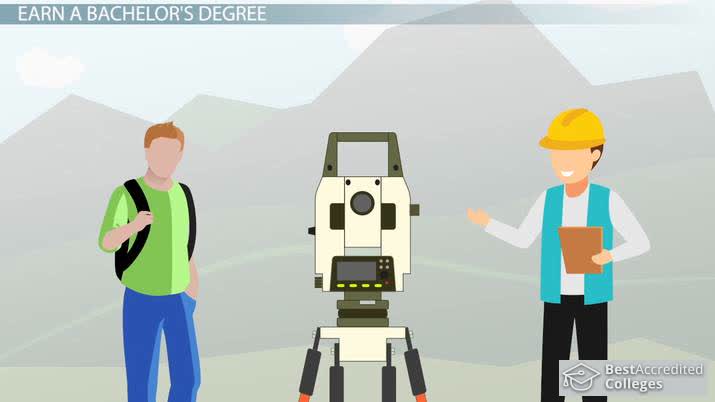Mon-Sat 9am-7pm




Climatology is more than just the study of weather. NASA defines climate as “the description of the long term weather pattern of a particular area.” There is even an old saying that sums this up quite nicely, “Climate is what you expect, weather is what you get.”
Climatology is the study of the myriad factors that influence weather, and the influence of weather on the environment. These include water, atmosphere, and geology. Climatology studies all of these things over the course of time, typically a 30 year cycle.
Climatologists can also be problem solvers, applying the research to address local climate issues, or to determine how to best work under different climate conditions. For example, they can work with or as weather forecasters, working to improve accuracy through developing new measurement tools and statistical models; conduct simulations; and translate findings into more easily understood terms for the general public.

Researching new technologies
Analyzing weather patterns
Generating new ideas to address climate issues
Creating and presenting proposals on their ideas
Performing tests of their proposed solutions
Working with other engineers and scientists to implement projects
The first step to beginning a career in climatology is to earn a bachelor’s degree. Popular majors for aspiring climatologists include climatology, meteorology, or atmospheric sciences. After graduation, you’ll want to begin earning professional experience in the field, so many aspiring climatologists find entry-level meteorology work with organizations like the National Weather Service.
However, if you wish to advance into a research climatologist role, you’ll need to earn one or more graduate degrees as well. Most government and research climatologist roles require a minimum of a master’s degree, so you’ll want to continue your education after earning a bachelor’s degree to pursue a master’s degree. Similar to the field of study for your bachelor’s degree, you’ll want to choose a master’s degree program that focuses on climatology or atmospheric sciences.
If you ever want to teach climatology at the college level, you’ll also need to earn a Ph.D. To qualify for tenured climatology professorships at colleges and universities, you’ll need to continue your education after earning a master’s degree to pursue a Ph.D. in climatology or atmospheric sciences. When that education is complete, you’ll be prepared to apply for open climatology professor roles.
While the U.S. Bureau of Labor Statistics (BLS) doesn't report a salary for climatologists, it has salary data for atmospheric scientists at large. According to the BLS, atmospheric scientists earn a median pay of $99,740 per year. Keep in mind that your salary may change based on your geographic environment, your experience level and your employer. For example, per the BLS, atmospheric scientists often earn a higher salary when working in research and development or for the government, as opposed to a role in broadcasting, management or consulting.
The biggest benefit of using climate change engineering is that it's effective. Through various climate change engineering initiatives, the amount of greenhouse gas in the atmosphere can decrease, thus protecting the long-term health of the planet. In addition, some climate change engineering also helps manage solar radiation, another important component of addressing climate change issues.
Because climate change is a global-level issue, solutions that address the problem on a similar scale are necessary, which is what climate change engineering aims to do. Engineers and scientists can implement these solutions on a large scale, unlike some other forms of climate change mitigation efforts. In addition, because these are large-scale solutions, they can also work faster than smaller fixes, helping to address the effects of climate change in a shorter timeframe.
Some climate change solutions aim to copy processes already present in nature. The hope of doing so is to limit the number of unintended side effects and better predict outcomes. For example, one proposed solution is atmospheric aerosols that are similar to those produced by volcanic eruptions, which help to block radiation from the sun.
The areas that currently need climate change solutions change continually. Therefore, some climate engineering projects focus on making their solution mobile, allowing them to move from location to location as needed. For example, direct air capture (DAC) systems remove carbon dioxide from ambient air. By doing this, rather than connecting to a single source of carbon dioxide, DAC systems can go where they are needed most.
The implementation of climate change engineering solutions requires workers across various industries. This can create additional jobs, which is helpful for improving the economy. This includes temporary jobs to build and install new technologies, along with long-term jobs to operate new equipment.
:As many climate change engineering solutions aim to alter the earth's environment on a large scale, this makes it harder to predict negative side effects. For example, the releasing of aerosols to protect against solar radiation could disrupt natural weather processes and make them harder to predict. In addition, there's some concern that if the operators of this technology stop releasing aerosols, it could result in a rise in climate temperatures, thereby negating the effects. When looking for solutions, climate change engineers benefit from carefully considering all potential side effects and conducting research that allows them to limit those effects.
Some climate change engineering solutions have very high costs for implementation. For example, one proposed solution is a solar shield in space designed to deflect sunlight. Such an initiative would require tremendous public support in order to generate the funds necessary. This also applies to other solutions such as DAC. To turn their ideas into a reality, climate change engineers have the task of simultaneously reducing costs while also promoting the benefits of investing in their ideas.
Implementing climate change engineering solutions can also take a considerable amount of time. In some cases, large infrastructure projects are needed, while in others, engineers still need to develop or improve the required technology. Some solutions can possibly take decades to work toward a problem that needs more immediate addressing. Climate change engineers, therefore, tend to focus on projects that can help more in the short term.
When designing climate change solutions, engineers ensure that their projects do not consume so much energy that they offset the gains of the project. If a project is so energy-intensive that carbon dioxide produced through power generation is more than the carbon dioxide being removed from the air, the project isn't successful. To avoid this, climate change engineers look for more environmentally-friendly energy sources, such as solar power, or look for ways to reduce the power needs of their projects.
Scientific tool use: Climatologists use a variety of scientific tools to assess data in the field and in a laboratory.
Problem-solving: A climatologist uses this skill to resolve local climate issues and to determine ho tow work under various weather conditions.
Scientific software knowledge: Climatologists use different scientific software to create graphics and maps that present their findings.
Call us at +91 9205084085, Monday - Friday, 9 am - 7 pm


